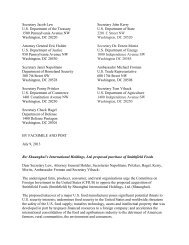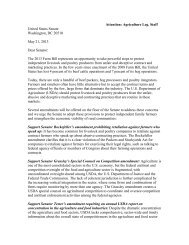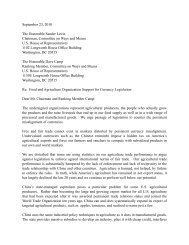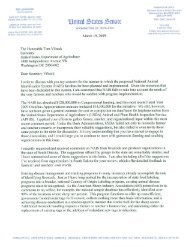Exhibit 8, 100416 Brazil FMD Risk Evaluation - R-Calf
Exhibit 8, 100416 Brazil FMD Risk Evaluation - R-Calf
Exhibit 8, 100416 Brazil FMD Risk Evaluation - R-Calf
Create successful ePaper yourself
Turn your PDF publications into a flip-book with our unique Google optimized e-Paper software.
<strong>FMD</strong><br />
<strong>Brazil</strong> currently has several different <strong>FMD</strong> zones. Santa Catarina is the only zone designated by the<br />
OIE as free of <strong>FMD</strong> without vaccination. At the time of this analysis, the area recognized by the<br />
OIE as free of <strong>FMD</strong> with vaccination contains 16 States, mostly located in the southern and central<br />
portion of <strong>Brazil</strong> (OIE reference). Santa Catarina is surrounded by the States of Rio Grande Do Sul<br />
and Paraná, both recognized by the OIE as free of <strong>FMD</strong> with vaccination. Outbreaks of <strong>FMD</strong> have<br />
occurred in Rio Grande Do Sul (2000/2001) and Paraná and Mato Grosso do Sul in 2005 and 2006.<br />
Rio Grande do Sul<br />
In 2000, the year that vaccination ceased in Rio Grande do Sul, an <strong>FMD</strong> outbreak occurred in that<br />
State. <strong>FMD</strong> was not detected in Santa Catarina. The Rio Grande do Sul outbreak affected 22<br />
premises in four neighboring municipalities in the northwestern region of the State. The disease was<br />
eliminated by stamping out. The eradication program involved the destruction of 11,017 animals<br />
(8,185 bovine, 2,106 swine, 722 ovine, and 4 caprine species). In addition, officials imposed strict<br />
movement controls and biosecurity measures [6, 7, 12, 16]. The disease was linked to a Type O1<br />
<strong>FMD</strong> outbreak in Argentina that occurred in 2000. Transit of infected cattle in the border region<br />
between Argentina, <strong>Brazil</strong>, and Uruguay was implicated as the pathway of introduction. At that<br />
time, vaccination against <strong>FMD</strong> remained suspended in Rio Grande do Sul [16, 17].<br />
In 2001, another outbreak occurred in Rio Grande do Sul affecting 30 premises in six different<br />
municipalities. In this outbreak, in addition to implementing a stamping out program, officials<br />
carried out emergency vaccination for all cattle in the State. A total of 2,348 farms were quarantined<br />
and 32,408 animals were slaughtered. No direct epidemiological relationships between the six<br />
affected municipalities were identified. Investigation results suggested that the six outbreaks<br />
resulted from independent re-introductions, all coming from Uruguay. Direct epidemiological<br />
relationships were established between the owner of an affected herd in one municipality and<br />
producers in Uruguay. The observation that the first occurrence of disease was farther away from<br />
the border than subsequent occurrences was significant because the owner of the affected herd had<br />
been in Uruguay a few days before the outbreak erupted in his herd.<br />
No direct relationship was identified between the outbreaks in the six municipalities and the<br />
outbreaks in Argentina since the virus in Argentina was type O and the virus in Uruguay was<br />
classified as type A [6]. At that time, vaccination against <strong>FMD</strong> was reinstated throughout Rio<br />
Grande do Sul [16, 17].<br />
Paraná<br />
On October 21, 2005, <strong>Brazil</strong>ian authorities detected <strong>FMD</strong> in the State of Paraná. The outbreak was<br />
immediately reported to the OIE. As a result, the affected properties, as well as those located within<br />
a 10-km radius, were immediately quarantined and interdicted. Paraná reported a total of 11<br />
outbreaks (two outbreaks in Maringá, one in Grandes Rios, four in Loanda and two in Amaporã).<br />
Epidemiological investigation revealed that the disease entered Paraná because of the movement of<br />
87 heifers from Mato Grosso do Sul on September 27, 2005. These animals originated from a<br />
APHIS <strong>Evaluation</strong> of the Status of the <strong>Brazil</strong>ian State of Santa Catarina 23











